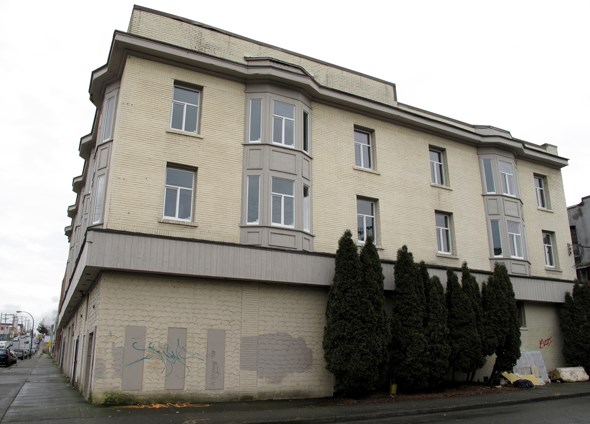It's Chinese New Year this week and while there will be dragon dances, sales, special menus, and hoopla in many Vancouver neighbourhoods -- Victoria Square (at 41st) and Chinatown (near Main and Keefer) are just two -- one neighbourhood seems to have been left off the invite list.
The area some of us think as "The Chicken District" (or home of The Chair Factory) was slated to become Chinatown II. In about 1910, the city made some attempt to move Chinatown over to the area near Franklin and Woodland. A number of businesses did move, and buildings investments were made -- of particular note is a $15,000 Buddhist temple and rooming house (no longer standing) and an apartment building on the SE corner of Franklin and Woodland (still standing).
The building is memorable to some for its recent history as a notorious "Vancouver waterfront" bar, but it is particularly notable because it was designed by W.H. Chow, a Chinese-Canadian architect whose other projects can still be found in Chinatown.
If you're downtown this week for Lunar celebrations, you can find more W.H. Chow buildings -- there are many resources available for doing self-guided tours (Here's one.) A consequence of the "historic areas" designation placed on much of Chinatown exactly 40 years ago, in February 1971, was that many buildings were saved from further threat of things like freeway development. Another consequence, some say, is the stagnation of the business community from having nowhere to grow -- this very issue was debated last month in Vancouver City Council Chambers, and then went back to the drawing board.
But let's head back to The Chicken District. My guide to this forgotten corner was John Atkin, the go-to-guy as far as I'm concerned for Vancouver architectural and neighbourhood history. (The title of this post was actually the title of his walk.)
These photos were taken during or after his walking tour on January 15, 2011 through, what he called, "this ragtag end of a neighbourhood:"
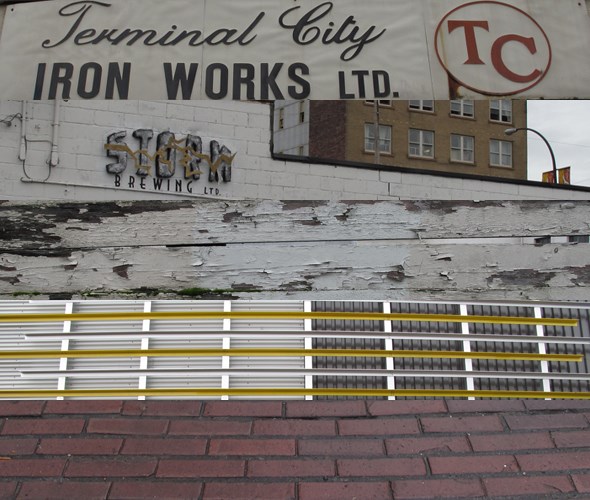 Top to Bottom: Terminal City ironworks sign, Storm Brewery, wood fence, bricks. The red bricks under some of Vancouver's streets indicate old delivery routes. "The grooves between bricks gave really good grip for horses to get up the road," John Atkin said.
Top to Bottom: Terminal City ironworks sign, Storm Brewery, wood fence, bricks. The red bricks under some of Vancouver's streets indicate old delivery routes. "The grooves between bricks gave really good grip for horses to get up the road," John Atkin said.
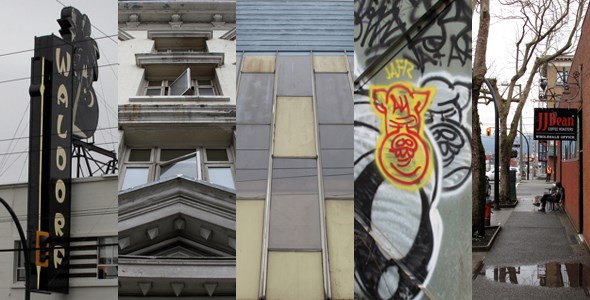 Left to Right: The renovated Waldorf hotel ("It's great to see something survive and come back in a way that's respectful to the original," Atkin said); a 1912 apartment building by Townsend & Townsend; retro glass front; graffiti; the JJ Bean roasting house.
Left to Right: The renovated Waldorf hotel ("It's great to see something survive and come back in a way that's respectful to the original," Atkin said); a 1912 apartment building by Townsend & Townsend; retro glass front; graffiti; the JJ Bean roasting house.
The semi-industrial neighbourhood is going to see a lot of change over the next 10 years as the re-development of Hastings Street moves East, John Atkin said. He also said: "Like any Vancouver neighbourhood, it's worth exploring because it's surprising what you'll see."
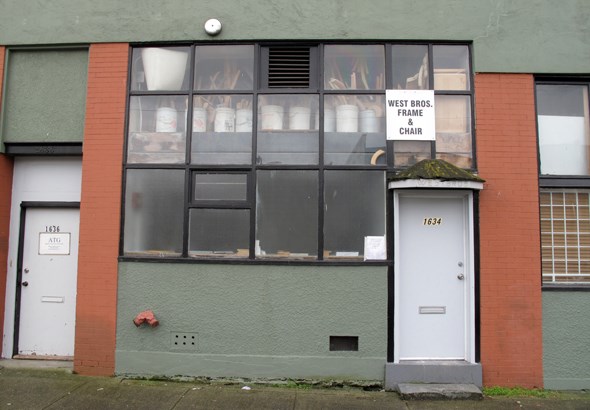
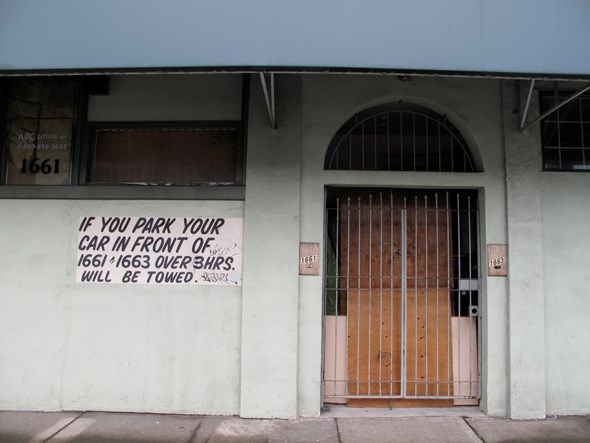
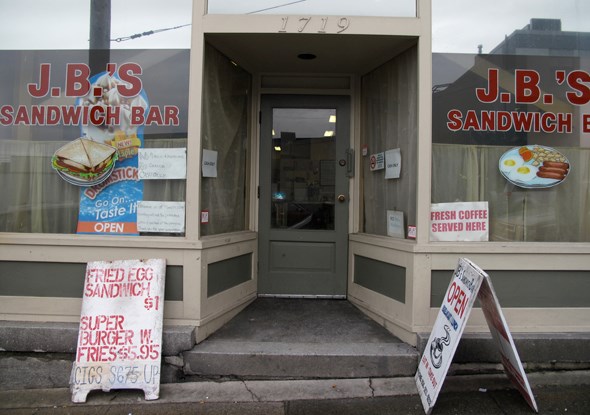
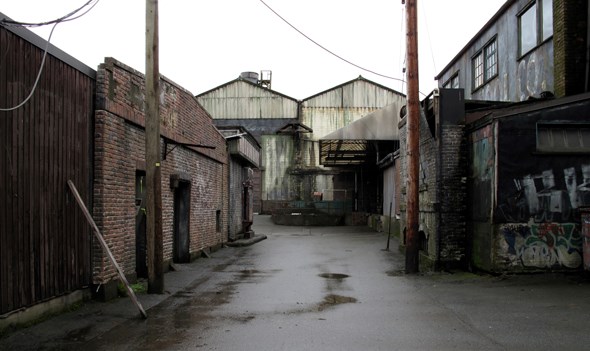
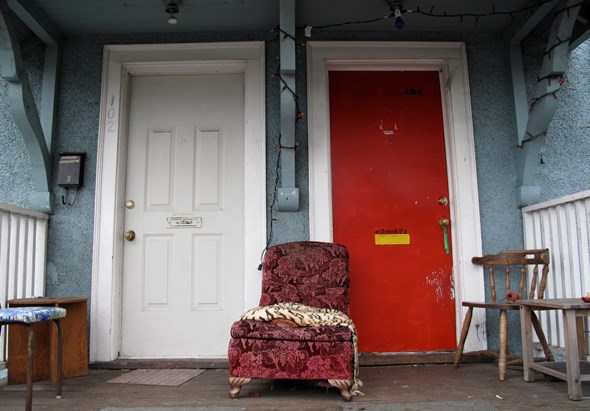
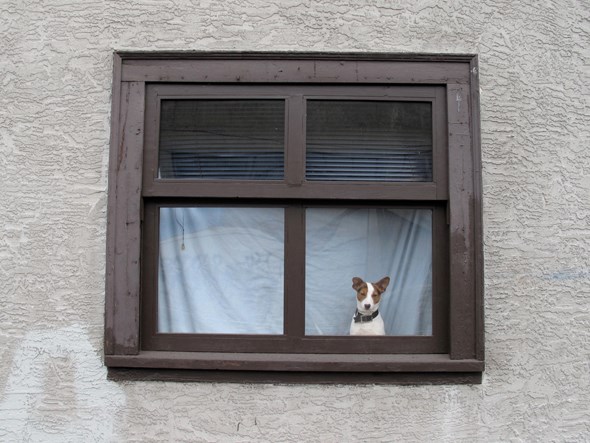 If, like this Chicken District dog, you got this far but remain unimpressed, I'll leave you with three awesome things that happened this week in Vancouver history (gathered from vancouverhistory.ca):
If, like this Chicken District dog, you got this far but remain unimpressed, I'll leave you with three awesome things that happened this week in Vancouver history (gathered from vancouverhistory.ca):
1882: On February 4, the lights were turned on. That's right, the first electric lights on the coast north of San Francisco went online at the Moodyville sawmill, on the north side of Burrard Inlet.
1907: The George Trorey jewelry store at Hastings and Granville (NE corner) was bought by Henry Birks and Sons of Montreal. The Trorey Clock that was outside became the Birks Clock, and is still there today... it's just across the street (SE corner).
1969: On February 1, the Nine O'Clock gun at Brockton Point went missing. A group of UBC students (engineers) eventually returned it.

